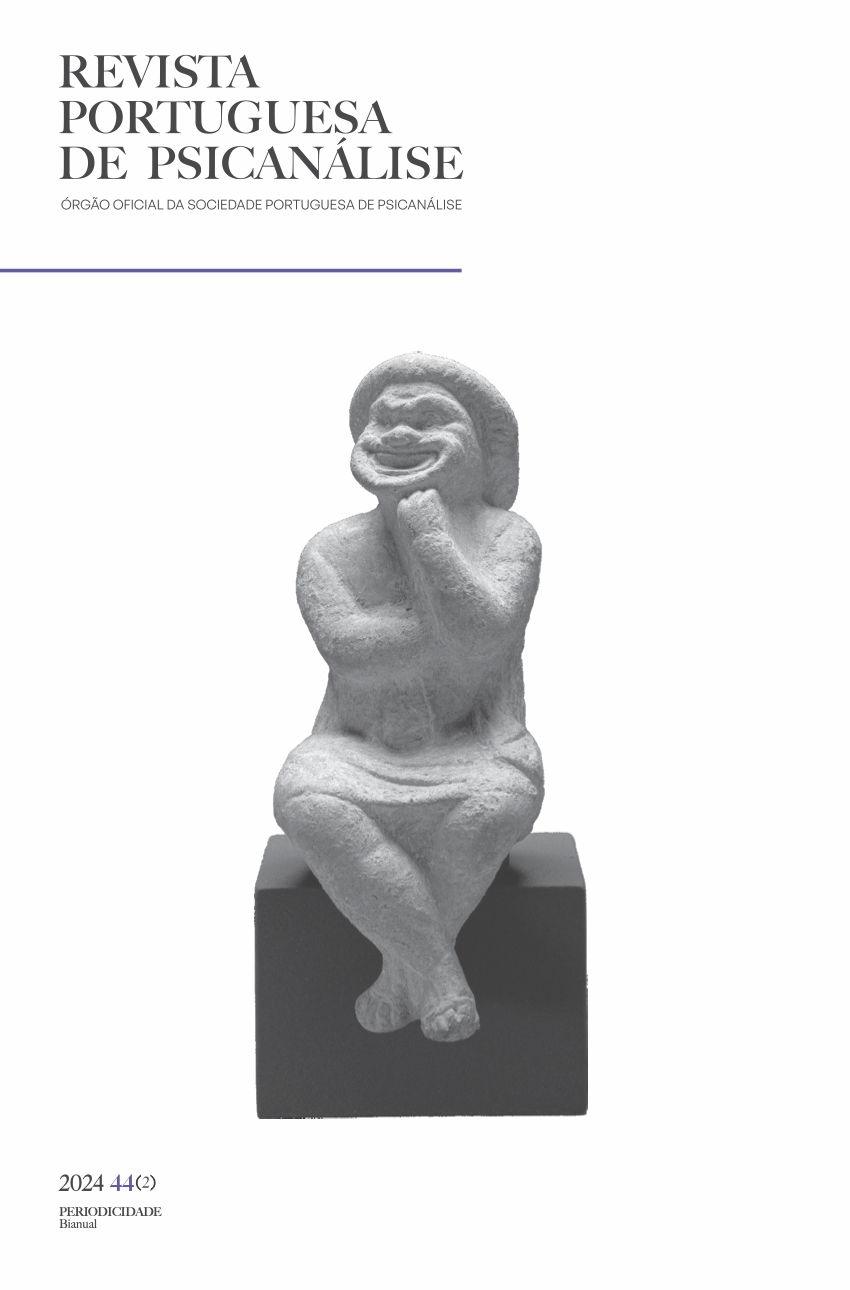Quién es el Analista que Sueña el Paciente y Quién es el Supervisor Que Comprende el Sueño: El Tercero en Supervisión

Resumen
En este artículo hemos intentado explorar paralelamente el desarrollo de las ideas sobre Supervisión en Psicoanálisis y el surgimiento del concepto del Tercero Analítico. Aunque este concepto solo asumió una referencia específica en los trabajos de Grotstein (1979, 2000) y de Ogden (1994) ya estaba presente en la mente y en el trabajo clínico de varios Triángulos Psicoanalíticos.
Destacamos la importancia del concepto de Proceso Paralelo en la Supervisión, un proceso inconsciente que lleva a que la situación analítica se reproduzca en la situación de supervisión, permitiendo al supervisor identificar los aspectos que aún no han sido comprendidos por el supervisado. De este modo, el supervisor debe ser quien sueña el sueño aún no soñado por el supervisado, para que éste, a su vez, pueda ayudar al paciente a soñar.
Palabras clave
supervisión, tercero analítico, triángulos psicoanalíticos, proceso paralelo, história del psicoanálisis
Biografía del autor/a
Guilherme Canta
Psicólogo Clínico e Psicoterapeuta, Membro Candidato da Sociedade Portuguesa de Psicanálise. Serviço de Psicologia Clínica e Hospital de Dia do Hospital Júlio de Matos – Unidade Local de Saúde São José e Consultório Privado, Lisboa.
Citas
- Anzieu, D. (1989). Beckett and Bion. International Review of Psycho-Analysis, 16, 163–169.
- Baranger, M. & Baranger, W. (2009). The Work of Confluence – Listening and Interpreting in the Psychoanalytic Field. Karnac Books & International Psychoanalytical Association (IPA).
- Bléandonu, G. (1993). Bion, A Vida e a Obra – 1897-1979. Imago.
- Coelho Junior, N. E. (2015). Figuras da Terceiridade na Psicanálise Contemporânea: Suas Origens e seus Destinos. Cadernos de Psicanálise Rio de Janeiro, 37(32), 175-195. http://pepsic.bvsalud.org/scielo.php?script=sci_arttext&pid=S1413-62952015000100010&lng=pt&tlng=pt
- Coelho Junior, N. E. (2016). The Origins and Destinies of the Idea of Thirdness in Contemporary Psychoanalysis. The International Journal of Psychoanalysis, 97, 1105–1127.
- Ferro, A. & Basile, R. (Eds.) (2009). The Analytic Field – A Clinical Concept. Karnac Books & The European Federation for Psychoanalytic Psychotherapy (EFPP).
- Freud, S. (1955). Analysis of a Phobia in a Five-year-Old Boy. Em S. Freud, The Standard Edition of the Complete Psychological Works of Sigmund Freud, vol. x (pp.1–149). The Hogarth Press. (Original publicado em 1909.)
- Green, A. (2004). Thirdness and Psychoanalytic Concepts. The Psychoanalytic Quarterly, LXXIII(1), 99–135.
- Green, A. (2005). Key Ideas for a Contemporary Psychoanalysis – Misrecognition and Recognition of the Unconscious. Routledge.
- Grotstein, J. S. (1979). Who is the Dreamer Who Dreams the Dream and Who is the Dreamer Who Understands It. Contemporary Psychoanalysis, 15(1), 110–169.
- Grotstein, J. S. (1990). The “Black Hole” as the Basic Psychotic Experience: Some Newer Psychoanalytic and Neuroscience Perspectives on Psychosis. Em A.-L. Silver & M. B. Cantor (Eds.), Psychoanalysis and Severe Emotional Illness (pp. 29–46). The Guilford Press.
- Grotstein, J. S. (2000). Who is the Dreamer Who Dreams the Dream – A Study of Psychic Presences. Routledge.
- Herman, W. E. & Fair-Schulz, A. (2018). The Psychological Odyssey of 1909: Carl Gustav Jung’s Pivotal Encounter with Sigmund Freud During Their Journey to America. Swiss American Historical Society Review, 54(2), 1–26.
- Jones, E. (1989). A Vida e a Obra de Sigmund Freud – Volume 2: A Maturidade (1901-1919). Imago. (Original publicado em 1955.)
- Jung, C. G. (1950). The Tavistock Lectures. Bollingen Series XX – The Collected Works of C. G. Jung – Volume 18 – The Symbolic Life. Princeton University Press. (Original publicado em 1935.)
- Kernberg, O. F. (2010). Psychoanalytic Supervision: The Supervisor’s Task. The Psychoanalytic Quarterly, LXXIX(3), 603–627.
- Kernberg, O. F. (2019). Reflections on Supervision. The American Journal of Psychoanalysis, 79(3), 265–283.
- Kwawer, J. S. (2019). The interpersonal Legacy of Chestnut Lodge. Contemporary Psychoanalysis, 55(1–2), 86–98.
- Meigs, K. (2017). The Failure of Clara Thompson’s Ferenczian (Proxy) Analysis of Harry Stack Sullivan. The American Journal of Psychoanalysis, 77(3), 1–19.
- Ogden, T. H. (1994). Subjects of Analysis. Karnac Books.
- Ogden, T. H. (2009). On Psychoanalytic Supervision. Em Rediscovering Psychoanalysis – Thinking and Dreaming, Learning and Forgetting (pp. 31–49). Routledge.
- Pereira, D. R. & Coelho Junior, D. R. (2022). Intersubjetividade no Pensamento Clínico de Harold Searles: Ressonâncias Contemporâneas. Revista Latinoamericana de Psicopatologia Fundamental, 25(1), 43–65. https://doi.org/10.1590/1415-4714.2022v25n1p43.3
- Petratos, D. B. (1990). The European Teachers of Dr. Frieda Fromm-Reichmann. Em A.-L. Silver & M. B. Cantor (Eds.). Psychoanalysis and Severe Emotional Illness (pp. 152–166). The Guilford Press.
- Searles, H. F. (1955). The Informational Value of the Supervisor’s Emotional Experiences. Psychiatry, 18(2), 135–146.
- Silver, A.-L. (1993). Countertransference, Ferenczi, and Washington, DC. Journal of the American Academy of Psychoanalysis, 21(4), 637–654.
- Silver, A.-L. & Cantor, M. B. (Eds.) (1990). Psychoanalysis and Severe Emotional Illness. The Guilford Press.
- Simon, B. (1988). The Imaginary Twins: The Case of Beckett and Bion. The International Review of Psycho-Analysis, 15, 331–352.
- Vollmer Filho, G. & Bernardi, R. (1996). As Funções Múltiplas do Supervisor, os seus Relacionamentos com o Supervisionado, o Analista do Supervisionado, o Paciente, o Quadro de Referência Teórico e a Instituição de Treinamento. Revista de Psicanálise da Sociedade Psicanalítica de Porto Alegre, III(2), 285–293.
- Watkins Jr., C. E. (2018). The Supervisee’s Internal Supervisor Representations: Their Role in Stimulating Psychotherapist Development. International Journal of Psychotherapy, 22(3), 63–73.
- Waugaman, R. C. (2015). Searles’s Discovery of the Parallel Process in Supervision. Psychiatry – Interpersonal and Biological Processes, 78(3), 225–230.
- Zaslavsky, J., Nunes, M. L. T., & Eizirik, C. L. (2003). A Supervisão Psicanalitica: Revisão e uma Proposta de Sistematização. Revista de Psiquiatria doRio Grande do Sul, 25(2), 297–309.